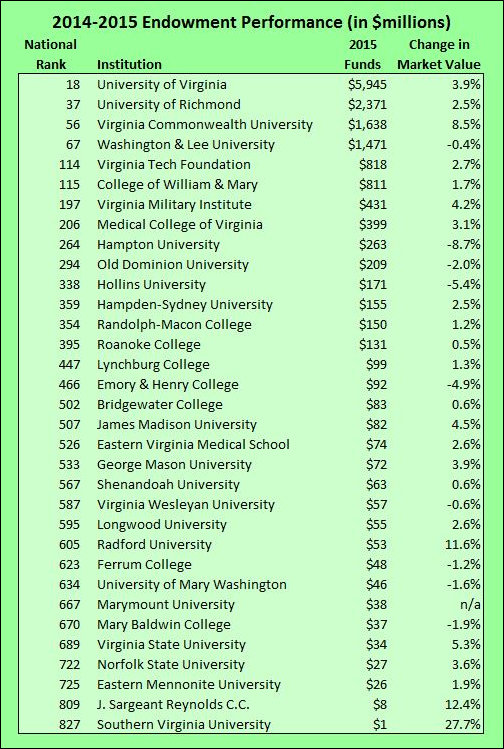Pension funds and individual savers aren’t the only groups finding it difficult to generate decent investment returns in the current near zero-interest rate environment. Data gathered from 812 colleges and universities show that participating institutions returned an average of only 2.4% (net of fees) in 2015, contributing to a decline in their long-term, 10-year average return from 7.1% to 6.3%.
“This year’s long-term return figure is well below the median 7.5 percent that most endowments report they need to earn in order to maintain their purchasing power after spending, inflation and investment management cost,” states the press release announcing the results of the National Association of College and University Business Officers-Commonfund study of university endowments’ financial performance.
Investment returns were down for all asset classes: domestic equities, alternative strategies, fixed income, international equities, and short-term securities/cash. This is what comes of a Federal Reserve Board policy of quantitative easing that has driven down interest rates to near-zero levels for more than seven years now. There has been too much money chasing too few sound investments, creating asset bubbles around the world that now are deflating — along with financial returns. While Fed policy benefits the world’s largest borrower, the United States federal government ($19 trillion in debt and counting), it punishes savers, which includes state pension funds, private pension funds, insurance companies, and Americans saving for retirement.
For every percentage point shaved off the interest rate curve, Uncle Sam saves about $190 billion a year. (Other borrowers benefit, too, such as buyers of houses and cars.) But savers are punished. That’s a major reason state pension funds are in crisis. They’re always playing catch-up to ever-falling investment yields.
America’s universities are another victim of Fed policy. Collectively, their endowments hold assets valued at $528 billion. A 0.8% decline in return on investment amounts to $4.5 billion. Translated into Virginia terms, an 0.8% decline in return on the $16 billion in Virginia university endowments amounts to almost $130 million. That’s right, Fed policy is costing Virginia universities $130 million a year — and nobody knows about it, and nobody talks about it.
““FY2015’s lower average 10-year return is a great concern,” NACUBO President and Chief Executive Officer John D. Walda said. “On average, institutions derive nearly 10 percent of their operating funds from their endowments. Lower returns may make it even tougher for colleges and universities to adequately fund financial aid, research, and other programs that are very reliant on endowment earnings and are vital to institutions’ missions. ”
Higher ed bears most of the responsibility for runaway costs and tuition, but it isn’t responsible for declining investment returns. Next year is not likely to get any better. The U.S. stock market is down, international stocks are down, commodity prices are down, and interest rates remain depressed. Even hedge fund managers are losing money. Most likely, Virginia colleges and universities will take another hit, and it doesn’t take a Larry Sabato to predict that they will respond by boosting tuitions and begging the General Assembly for more money.



